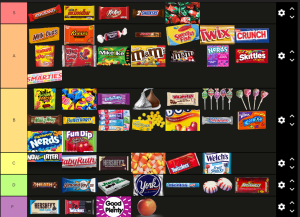The freetime shortage in our schools
Many students spend far too much time completing homework, eliminating free time.
January 3, 2022
For many students, the drawl and mundanity of the school year can seem unending.
Apart from praying for mass damage caused by the weather to cancel school, students’ only form of coping usually divulges into simply waiting for the next break. Unfortunately, these breaks can often only be a day or two and be quite far apart. As any given student will tell you, this leads to mass burnout, especially while approaching summer break with over a month straight without breaks. The reason this is the case is due to us instead having a massive break spanning multiple months, depriving students of regular breaks throughout the year to alleviate this buildup of stress.
It goes without saying that advocating for abolishing summer break will be met with a pretty massive amount of protest from students and teachers, but I’m not really for removing summer break, just significantly shortening it. Take for example the model Australia opts to use. While we only have two longer breaks in our school year, in addition to holiday breaks, Australia opts to place a two week break in between each of their four quarters while still maintaining a fairly long summer break. This allows time for students to still participate in activities that generally take place over the summer while still providing a sizable break from the stress school causes in between quarters.
In addition to an excess of school related stress, a lack of breaks throughout the year can also contribute to a toxic perception of leisure time that can last an individual their lifetime. A study done by students from the University of Ohio, Harvard and Rutgers not only found that leisure activities help contribute to good mental health, but also that a negative view of this leisure time correlates to higher quantities of stress, anxiety and depression. The idea of freetime is hardcoded into the minds of high schoolers as wasted time. Whether it’s assigning students homework and studying without any study time in class or pressure to get a job by a kids family, the idea of frequent leisure time has become more and more of a luxury. Simply thinking of all that a student is expected and told to do in order to maximize their chances of getting into a good college, the list quickly becomes overwhelming. Asking kids to receive good grades, participate in as many extra curricular activities as possible, get in community service time and perform well on standardized testing is simply ridiculous and helps contribute to this negative perception of leisure time.
The reality of being a human being is that time for yourself is important, and for most, a necessity. When students have a list of things they need to do even after leaving school, it’s difficult for them to relax guilt free. This naturally makes five days straight of this stress and expectation a gauntlet of struggling to maintain a healthy work life balance. These issues are often portrayed as inevitabilities that come along with schooling, but this is not the case, with many proven solutions to this all too popular problem. One of these proven solutions is a four day school week. The four day week is an idea originating and spreading from more rural areas looking to save money. The week is reduced by extending the length of the school day while removing a day of the week from the schedule that students would generally be in school. Though this phenomenon is still fairly recent and there is therefore less data on it’s effects, the research that has been done shows that under these new conditions, high school age students are learning just as much if not more than they did under the five day week and are getting approximately 3.5 more hours of freetime. What’s more this system reportedly bolsters student attendance, saves money for the school to use, and improves teacher retention rates.
Popular policies such as the four day week, and more breaks are obvious solutions for the stressful and grueling nature of the school week. Naturally implementing these policies wouldn’t eliminate the problem of excessive stress, anxiety and depression among students, but they would certainly help. This is a problem whose solution benefits all parties involved, and it’s a mystery why they haven’t been implemented already. What’s more is that we fortunately live in a state evidently very open to policies such as the four day school week, with nearly one quarter of our school districts adopting this design. I suppose all that’s left to do for those capable of making these changes is to take the advice they thrust upon students and get to work.









